Places, museums, monuments : 32
-
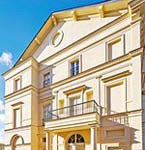 Place, museum or monument / Directoire-Consulat-Ier Empire/Directory-Consulate-1st Empire, Directory / 1st EmpirePalais du Roi de Rome at RambouilletThe facades and roofs of the southern part of the eastern wing of the former palace of the King of Rome in Rambouillet (Yvelines) have been classified officially as historical monuments, by decree of the Conseil d’Etat (February 2022). The building has been closed since…
Place, museum or monument / Directoire-Consulat-Ier Empire/Directory-Consulate-1st Empire, Directory / 1st EmpirePalais du Roi de Rome at RambouilletThe facades and roofs of the southern part of the eastern wing of the former palace of the King of Rome in Rambouillet (Yvelines) have been classified officially as historical monuments, by decree of the Conseil d’Etat (February 2022). The building has been closed since… -
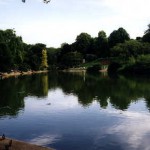 Place, museum or monumentMontsouris Park
Place, museum or monumentMontsouris ParkIt was as a result of Napoleon III's policy of creating, in Paris, urban green space at the four points of the compass that the Montsouris park was built on the plain of the same name between 1867 and 1878. The name Montsouris is a corruption of the word Moquesouris (mouse mocker), the ancient name […]
-
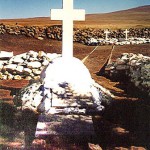 Place, museum or monumentPrince Impérial Commemorative Route
Place, museum or monumentPrince Impérial Commemorative RouteNapoleon Eugène Louis Jean Joseph, only son of the Emperor Napoleon III and the Empress Eugénie, met his death in South Africa in 1879 in tragic circumstances. In commemoration of this event, the province of KwaZulu created in 1995, a 'Napoleonic route' dedicated to the Prince Impérial. After the disaster at Sedan, the Imperial family […]
-
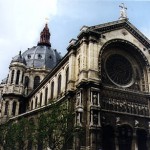 Place, museum or monumentSaint Augustin Church
Place, museum or monumentSaint Augustin ChurchDuring the second Empire, this neighbourhood, known as 'little Poland', underwent significant redevelopment following construction work by Haussmann – broad straight avenues were laid out and people flocked to live in the new houses built there, greatly increasing the population. A parish was therefore established and a church built, and great care was taken that […]
-
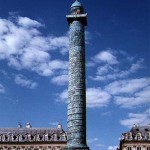 Place, museum or monumentVendôme Column
Place, museum or monumentVendôme Column“The city of Paris has a great mast, made entirely of bronze, with sculpted Victories and Napoleon as its lookout”. Such were Balzac’s words on the Vendôme column, the obelisk which throughout the 19th century was seen as the most important symbol of Paris and upon which each government attempted to make its mark. Its […]
-
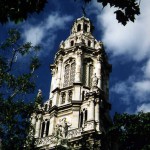 Place, museum or monumentTrinité Church
Place, museum or monumentTrinité ChurchThe decision to build the Trinité church was made in the Assemblée on the 22nd September 1855. The church, built in a neighbourhood turned upside-down by Haussmann's reconstruction of central Paris, was designed by the architect Théodore Ballu and building work lasted from 1861 to 1867. In fact, the clearing of the present-day place d'Estienne-d'Orves, […]
-
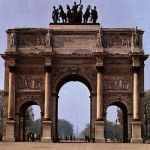 Place, museum or monumentArc de Triomphe du Carrousel – Paris
Place, museum or monumentArc de Triomphe du Carrousel – ParisThe Arc de Triomphe du Carrousel (firmly anchored to the tradition of the ancient triumphal arches) was built by Percier and Fontaine in circa 1806 to 1808 to celebrate the Napoleonic victories of 1805, and it was originally intended as a monumental entrance to the Tuileries palace. When that palace was destroyed by fire in […]
-
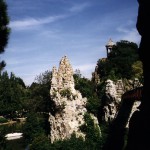 Place, museum or monumentButtes-Chaumont Park
Place, museum or monumentButtes-Chaumont ParkIt was on the immense 62.5-acre (25-hectare) stretch of wasteland between Belleville and La Villette that Haussmann and Alphand chose to construct one of the most extraordinary Parisian parks of the Second Empire, the “Parc de Buttes-Chaumont”. The name, derived from a contraction of the French words Monts chauves (bald hills), aptly describes the bare […]
-
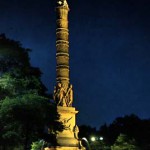 Place, museum or monumentChâtelet Fountain
Place, museum or monumentChâtelet FountainIn 1808, Napoleon had the head office of the military police of Paris demolished thus opening up the required space for Place Châtelet in the middle of which a fountain designed by Bralle was erected. Also called the “Palm-tree fountain”, it comprises a 70-feet high column topped by a statue representing Victory and the allegories […]
-
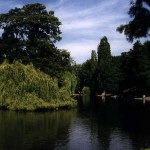 Place, museum or monumentBois de Vincennes
Place, museum or monumentBois de VincennesWork on the construction of the Bois de Vincennes (the forest of Vincennes) from the last remains of the forest to the East of Paris known as the Silva Lanchonia began in 1860. It was Napoleon III's desire to offer a place of recreation to the working class inhabitants of the XIIth and XIIIth arrondissements […]

